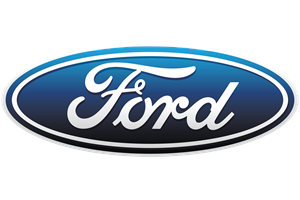


This edition of the Ford Mustang Hardtop 289 4.7 V8 is the 4 speed / Manual version and was first brought out in 1965. This was at around the same time as the introduction of the 1965 Aston-Martin DB6 1965 and the 1966 AC Cobra 427.This particular Ford Mustang has a 4727cc Naturally Aspirated Petrol powerplant with 8 cylinders in a V formation.
The Mustang shares its Petrol V8 engine configuration with the likes of the 2023 Dodge Challenger SRT Demon 170 and the 2023 Ferrari SF 90 XX Spider 4.0 V8 Turbo. If you're looking for other fast cars which share the Mustang's Rear Wheel Drive, Coupe combination then how about the 1982 Fiat X1/9 1.5 8V or the 1965 Aston-Martin DB6 1965.
Weighing in at 1383 kgs (3048 lbs) this makes the Ford Mustang Hardtop 289 4.7 V8 in the same weight category as the 2022 Lamborghini Huracan Tecnica 5.2 V10 or the give or take 50kg.
In terms of power the 4727cc 16V V8 engine produces 271 bhp (202 kW) @ 6000 rpm similar to the 2022 Hyundai i30 N Performance 2.0 Turbo (276 bhp) or the 2021 KIA K5 GT 2.5 Turbo (290 bhp).
The Naturally Aspirated V8 throws out 312 lb-ft (423.0 Nm) @ 3400 rpm placing it with cars of similar torque performance figures such as the 2023 Toyota Corolla GR Morizo Edition 1.6 Turbo (295 lb-ft) or the 2023 Porsche Cayenne E-Hybrid 3.0 V6 Turbo (310 lb-ft).
If one combines the weight with power or torque performance for the Ford Mustang you can get a better idea of it's real world performance.
![Porsche Panamera GTS 4.8 V8 - [2011] image Porsche Panamera GTS 4.8 V8 - [2011] image](/editionimages/1320.jpg)
The 2011 Porsche Panamera GTS 4.8 V8 (220.8 bhp per ton) has similar Bhp Per Ton stats as the Ford Mustang.
The Ford Mustang has a Power to weight ratio of 195.9 bhp per ton and 225.5 lb-ft per ton. Bhp Per Ton figures of the 1965 Mustang competing with the 2011 Porsche Panamera GTS 4.8 V8 (220.8 bhp per ton) or the 1996 Subaru Impreza WRX - Classic JDM (220.8 bhp per ton).
If you agree with the late great Carroll Shelby then arguably an even better indicator of potential performance, Torque. Use weight as well and you end up with - Torque per ton, with the Ford Mustang generating around 225.5 lb-ft per ton. If you're curious as to what other cars have as much torque to weight then look no further than the 1970 Oldsmobile Toronado 7.4 V8 (250.3 lb-ft per ton) or the 1972 Chevrolet Corvette C3 Stingray 454 7.4 V8 (250.3 lb-ft per ton).
With a 0-60mph time of 8.30 secs or a 0-100km/h (0-62mph) of 8.6 secs, this made the Ford Mustang Hardtop 289 4.7 V8 as fast as the 2007 Renault Megane Renaultsport 2.0 dCi 175 (8.30 secs) the 2005 Mazda MX5 1.8i (8.30 secs) the 2005 Peugeot 407 3.0 V6 Coupe (8.30 secs) the or the 2001 Volkswagen-VW Lupo 1.6 GTi (8.30 secs). This Ford Mustang Hardtop 289 4.7 V8 is also faster than the 2007 Seat Ibiza 1.8 20vt FR (8.40 secs) the 2006 Peugeot 207 CC GT (8.40 secs) the 2003 Vauxhall-Opel Astra 2.2 16V (8.40 secs) the and the 1996 Peugeot 106 16v GTi (8.40 secs).
![BMW 1 Series 135i 2d Coupe M-Sport - [2007] image BMW 1 Series 135i 2d Coupe M-Sport - [2007] image](/editionimages/125.jpg)
Quarter Mile time is a close race between the Mustang and the 2007 BMW 1 Series 135i 2d Coupe M-Sport
When talking about the performance of the Ford Mustang on the drag strip it can reach a quarter mile in an estimated 14.09 secs @ 97.1 mph. Similar performance down the quarter mile can be found with the the 2007 BMW 1 Series 135i 2d Coupe M-Sport (14.05 secs), the 1968 Jensen Interceptor FF 6.3L V8 (14.05 secs), and the 1969 Bristol 411 6.3 V8 (14.05 secs).
Modern performance cars are often artificially restricted to 155mph. The 1965 version of the Ford Mustang Hardtop 289 4.7 V8 has a maximum speed of 120mph.
If maxing out your car on the AutoBahn is your thing and you're wondering what's faster than the 1965 Ford Mustang Hardtop 289 4.7 V8 then how about the 2018 Toyota Sequoia TRD Sport 5.7 V8 (131 mph), the 2011 Abarth 500 Essessee 1.4 Turbo (131 mph), or the 2011 Abarth 500C Essesse 1.4 Turbo (131 mph).









Audi A6 3.0 TDI BiTurbo Quattro Tiptronic
Engine: Twin Turbo Diesel | 2967cc 24v V6
Top Speed: 155 mph
0-60mph: 4.80 seconds

Subaru Impreza WRX STI V1 - Classic JDM
Engine: Turbo Petrol | 1994cc 16v F4
Top Speed: 217.2 kph
0-100kph: 4.9 seconds



















